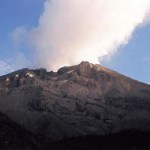Science Journalism
In the lead editorial at Science last week, Harvard University's Cristine Russell discusses the many emerging possibilities in science journalism. It's a mistake to frame current events as a "crisis," correctly explains Russell, but rather to look at trends as an opportunity to diversify, innovate, and experiment with new models and formats, expanding the network of science journalists into a truly global community, retraining journalists to produce content for new platforms and to cover related dimensions of policy and ethics, while broadening and diversifying audiences.
For journalists from…
Newspapers--and their localized science and environmental coverage--might be in decline across the U.S., but new ethnic media outlets, many of them in languages other than English, are thriving.
These outlets will be centrally important for reaching broader audiences with localized and relevant news and information about science, environment, and health. For example, many of these audience segments may have the greatest need for news about the health consequences of climate change or how to adapt to the rising price of energy. Yet, ethnic media are rarely if ever mentioned in discussions of…
I am back from an excellent science journalism conference in Denmark and will have more to say on the meeting which highlighted several issues that speak directly to challenges faced here in the US. But for now, I wanted to return to our Commentary article "Science Communication Re-Considered" published last week at Nature Biotechnology.
Of particular interest to readers, we discuss the rise of science blogging as just one small part of the complex puzzle which is public engagement. There is a lot to like about blogs but there is also a lot to be cautious about. Importantly, despite great…
The Associated Press announced Friday that it had entered into a partnership with four non-profit investigative journalism organizations to distribute their work to more than 1,500 American newspapers who are AP members.
As I commented Friday over at Science Journalism Tracker, the model developed in investigative journalism offers a blueprint for similar non-profit initiatives in science and environmental journalism. The announcement by the AP demonstrates the potential for non-profit ventures to reach a large audience while filling in a major gap in existing coverage at regional and local…
I won't try to recap all the news from last week, but I did notice a few articles from this weekend worth noting:
The Big Obsidian Flow at Newberry Volcano. This rhyolite lava flow erupted at ~1,300 years ago.
Geologists in Greece are keeping an eye on a submarine volcano called Columbus. Apparently a number of M4+ earthquakes have been reported, the sea floor has deformed and there have been "hot air eruption" (? ... I am a little skeptical of the last one without more details). The article is a little fuzzy on the details: the volcano is 6.5 meters southeast of Santorini and the Santorini…
In this month's issue of Nature Biotechnology, I join with other authors to suggest several bold new initiatives in science communication and journalism. The Commentary article includes an overview of key issues and trends in the field and closes with a series of specific recommendations.
The article is based on a workshop held this past year in Washington, DC, organized by Timothy Caulfield and Tania Bubela of the Health Law Institute at the University of Alberta. The authors reflect the participants in that workshop and include representatives from the U.S., Canada, the U.K., Germany and…
I head to Stockholm and Copenhagen today where on Wednesday I will be participating in a unique conference organized by the Danish Science Journalists Association. The focus is on many of the central themes discussed at this blog including framing, public engagement, the future of science journalism, and the promise and challenges of new media technologies. For more, check out below one of the "Dane in the Street" interviews that organizers have run in advance of the conference.
I won't have much time to blog but I do hope to be able to post my own pictures of these wonderful cities and to…
The future of science journalism and communication will involve three key strategies:
1. "Going broad" and reaching a diversity of audiences across non-traditional media platforms such as entertainment film and television, new genres of documentary film, new forms of multi-media storytelling, new genres involving satire and comedy, and through collaborations with the creative arts.
2. "Going deep" and creating new non-profit forms of digital science journalism, especially at the local or regional level, that offer rich reservoirs of information via content contributed by professional…
Here's some news bits for all you volcanophiles. Enjoy the weekend!
Ubinas in Peru steaming away in June 2007. Image courtesy of Eruptions reader Mike Lyvers.
There has been a lot of press lately on the theory that a large eruption from an ancient volcanic field in China (the 260-million-year-old Emeishan volcanic province of southwest China) could be the culprit in the grand Permian extinction. I have to admit, I've only skimmed the surface of this study, but the work lead by Dr. Paul Wignall (a paleontologist, not a volcanologist - not that there is anything wrong with that) seems to…
As I wrote last week, there was a lot to like about the "going broad" communication strategy of the Darwinius masillae fossil discovery published at PLoS One.
Yet, as I also noted the major caveat was that this strategy of reaching a broader and more diverse audience for science might be better applied to a scientific subject or body of research. When applied to a single study, there was a far greater likelihood of engaging in unmerited hype with the risk of diminishing public trust or at least numbing the audience to claims of "startling new discoveries."
So it is important to distinguish…
Night at Smithsonian topped the Box Office this Memorial Day weekend with a smash opening of more than $70M outpacing Terminator Salvation which scored a $43M debut.
Museum directors and science educators are sure to be looking to ride the movie's success with efforts to broaden their reach in terms of attendance and community engagement. Yet the adventure and the joy of a museum experience, captured so well in Ben Stiller's "Night at..." fantasy series, leaves open the question of what we exactly learn about science when visiting a museum and just as importantly, how we learn.
That was…
Al-Qider volcano in western Saudi Arabia. Image courtesy of Ahmed Al-Hussaini.
After a week's worth of worry, it appears that the seismicity in western Saudi Arabia is subsiding. The latest statement from Zuhair Nawab, the head of the SGS, is that over the past four days with fewer and less severe aftershocks. If this continues, people who have evacuated the area around Al Ais might be able to return to their homes in a few days. However, it is important to note that even though officials suggest the seismicity is waning (and there may be indications this is not entirely accurate), the swarm…
In June, I will be heading to Copenhagen to speak at and participate in the annual meeting of the Danish Science Journalists Association. The meeting titled "Framing Research" tackles many of the issues that I address in previously published and forthcoming articles, including a major article co-authored with several colleagues that is scheduled to appear around the time of the conference. [More on that in June.]
As a build up to the conference, the organizers have been conducting "person in the street" interviews on key themes. One of the main topics of the conference, as featured in this…
I did an interview this morning with Elie Dolgin of The Scientist magazine discussing the "going broad" media strategy surrounding Darwinius masillae aka Ida the fossil. The magazine has the Q&A interview up on their site. The user registration is free and well worth the 2 seconds in order to access the wealth of content at the magazine's Web site.
Below are my comments. As I've noted, this week's events will serve as a long standing case study for science communication scholars and professionals to analyze and debate.
The Scientist: How unusual is this amount of media attention for a…
UPDATE 5/21/2009 4:30 PM Pacific: The latest news suggests that there are little to no evidence of volcanic gases since Wednesday according to the SGS, but they continue to monitor.
Lava flows from a 1256 A.D. eruption near Medinah in Saudi Arabia (to the south of Harrat Lunayyir) taken by the crew of the ISS in 2004. It shows nicely the volcanic heritage (dark lava flow on right of image) in western Saudi Arabia. Image courtesy of JSC Earth Observation Lab.
Well, as the days go by, there are more and more indications that an eruption is about to occur in the Harrat Lunayyir region of Saudi…
Over at the NY Times' Opinionator blog, they provide a round up of commentary from science bloggers on Darwinius masillae aka Ida while also pointing to a revealing outing at the conservative blog Little Green Footballs on where Rush Limbaugh stands on evolution.
The publicity success of Darwinius masillae aka Ida continues on with Tuesday's New York Times story among the most blogged at the paper. The top 10 list as of this afternoon:
# Overhaul Likely for Credit Cards
# U.S. to Offer New Mileage and Emission Standards
# Thriving Norway Offers a Lesson in Frugality
# Obama to Offer Plan to Regulate Derivatives
# Seeking a Missing Link, and a Mass Audience
# U.S. Retail Sales Fall for a Second Month
# Food Companies Try, but Can't Guarantee Safety
# G.M. Dealers Wait to Learn Their Fate
# New Starbucks Ads Seek to Recruit Online Fans
# The Times and…
In June, I am headed to Denmark to speak at and participate in a unique conference organized by the Danish Association of Science Journalists. The one day conference titled "Dissensus 2009: Framing Research" examines the nature and implications of framing for science journalism and public engagement.
As part of the build up for the conference, organizers have been heading out into the parks, coffee shops and streets of Copenhagen to interview Danes about science. In the latest video, Danes are asked their views on evolution and their belief in possible alternatives.
It started this morning with the front page story at the NY Times. Tellingly, the article wasn't hooked around Darwinius masillae as a historic scientific breakthrough but rather as a novel ramping up in communication strategy for science. Now across the blogosphere, the tag of hype has caught on to Darwinius masillae, just notice these google results.
It's difficult to find fault with the criticism given that the architects of the media blitz are using trigger words like "missing link," "the eighth wonder of the world," and "an asteroid falling down to Earth" in the world of Paleontology.…
The Washington Post's media reporter has joined the ranks of those who fear the imminent demise of journalism. I don't share this outlook. In fact, I see journalism--and science journalism in particular--on the edge of transformation and renewal, but more on this over the coming weeks.
In the meantime, consider what Howard Kurtz has to offer in his column today.




